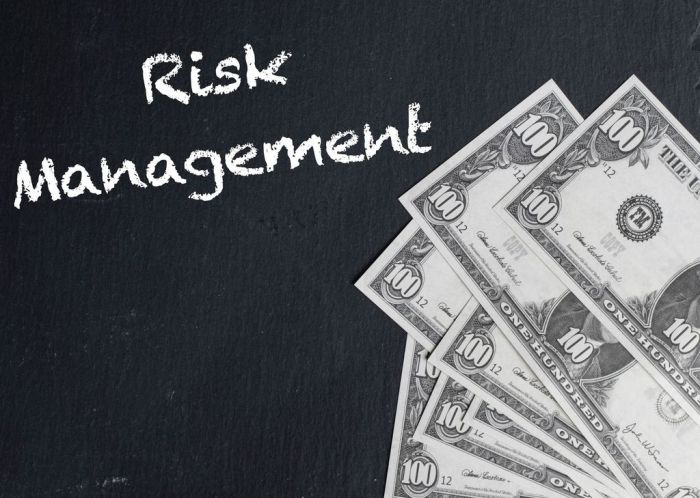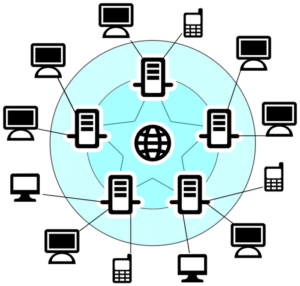
Risk monitoring software is revolutionizing the way businesses operate by identifying potential threats before they escalate into serious issues. It empowers companies to proactively manage risks, ensuring that they maintain compliance and safeguard their assets. With its ability to streamline processes and enhance decision-making, this software has become indispensable across various industries.
From finance to healthcare, organizations are leveraging risk monitoring tools to drive innovation and improve overall productivity. By integrating emerging technologies, businesses can enhance their risk management strategies, positioning themselves for success in an increasingly competitive market.
Risk Monitoring Software Overview
Risk monitoring software is a critical tool for organizations aiming to identify, assess, and mitigate potential risks that could impact their operations. These software solutions enable businesses to continuously monitor risk factors, ensuring proactive management and timely response to any emerging threats. By integrating data analytics, reporting tools, and alert systems, risk monitoring software provides organizations with the insights needed to make informed decisions.Various industries benefit from risk monitoring solutions, including finance, healthcare, manufacturing, and construction.
For instance, financial institutions utilize these tools to comply with regulatory requirements and manage credit risk, while healthcare organizations monitor patient safety risks and regulatory changes. Key features to consider when selecting risk monitoring software include user-friendliness, real-time reporting capabilities, integration with existing systems, and customizable dashboards.
Business Innovation
Risk monitoring software not only helps businesses manage threats but also serves as a catalyst for innovation in business processes. By understanding and mitigating risks, companies can explore new opportunities without fear of potential setbacks. Case studies illustrate this, with many organizations reporting increased innovation after adopting robust risk management practices. For example, a tech company that adopted risk monitoring software was able to streamline its product development, reducing time-to-market and enhancing competitive advantage.Emerging technologies such as artificial intelligence (AI) and machine learning are increasingly integrated with risk monitoring tools, allowing for improved predictive analytics, automated reporting, and enhanced decision-making processes.
Businesses leveraging these technologies can achieve greater efficiency and adaptability in their risk management strategies.
International Business
Global businesses rely heavily on risk monitoring software to navigate complex international environments. Different countries have unique regulatory requirements and cultural differences that influence risk management strategies. For instance, European companies may prioritize data protection due to stringent GDPR regulations, while U.S. firms might focus more on financial compliance. Compliance mandates such as the Sarbanes-Oxley Act (SOX) in the U.S., the Basel Accords for banking, and the International Organization for Standardization (ISO) standards globally shape how organizations implement risk monitoring solutions.
Adapting to these regulations is crucial for maintaining operational integrity and avoiding significant penalties.
Business Interviews
When interviewing candidates for risk management roles, it’s essential to ask questions that reveal their understanding of risk assessment and mitigation strategies. A set of effective interview questions could include:
- Can you describe a time when you identified a significant risk and how you managed it?
- What risk management frameworks are you familiar with?
- How do you stay updated with the latest regulations affecting risk management?
- What tools or software have you utilized for risk monitoring?
Insights from experts emphasize the importance of risk monitoring in interviews. Candidates should demonstrate their ability to integrate risk management into broader business strategies, showcasing skills in analytical thinking and decision-making. Professionals in this field must also possess strong communication skills to effectively convey risks and strategies to stakeholders.
Job Search Techniques
For those seeking roles in risk management, employing effective job search techniques is vital. Networking through industry conferences and online platforms can provide valuable connections and opportunities. Tailoring resumes to highlight relevant skills and experiences is crucial; candidates should include specific examples of their involvement in risk management and the impact of their contributions.Common job titles related to risk management software include Risk Analyst, Compliance Officer, Risk Manager, and Data Analyst.
Each of these roles requires a unique blend of analytical and communication skills, alongside technical proficiency in risk monitoring tools.
Business Management
Managers play a pivotal role in utilizing risk monitoring software for informed decision-making. By leveraging these tools, they can evaluate potential risks associated with strategic initiatives, ensuring that the organization remains agile and resilient. Risk management directly impacts overall business strategy, allowing management teams to allocate resources effectively and prioritize projects with the best risk-reward ratios.Training managers in effective risk monitoring practices is essential for fostering a risk-aware culture within the organization.
Techniques such as workshops, simulations, and ongoing education can enhance their understanding of risk dynamics, helping them make better strategic decisions.
Marketing Direct
Marketing risk monitoring software to potential clients requires a strategic approach. Understanding customer pain points is key; organizations are more likely to invest in solutions that directly address their specific challenges. Creating targeted marketing campaigns that highlight the unique features and benefits of the software can significantly improve outreach efforts.A tailored marketing plan should include:
- Identifying target industries that require robust risk management solutions.
- Providing case studies and testimonials from existing users.
- Offering demos and free trials to showcase the software’s capabilities.
Business Networking
Networking strategies for professionals focused on risk management include attending industry conferences and participating in online forums. Such platforms provide opportunities to connect with peers, share insights, and discuss best practices in risk monitoring. Industry conferences often feature key influencers who shape risk management trends, making them ideal environments for learning and collaboration.A list of key influencers in the risk management space might include:
- John Doe – Expert in financial risk management.
- Jane Smith – Advocate for cybersecurity in risk management.
- Mike Johnson – Thought leader in compliance and regulatory affairs.
Business Outsourcing
Outsourcing risk management functions can be an effective strategy for businesses seeking to enhance their risk monitoring processes. By delegating these tasks to specialized firms, organizations can benefit from expert knowledge while focusing on core business activities. However, outsourcing comes with its own challenges, such as ensuring alignment with company values and maintaining oversight. A checklist for evaluating potential outsourcing partners should include:
- Expertise in the specific area of risk management needed.
- Proven track record and references from previous clients.
- Capability to integrate seamlessly with existing systems.
Business Presentation
When introducing risk monitoring software to stakeholders, a well-structured presentation is essential. Key metrics to include might encompass risk reduction statistics, cost savings from improved compliance, and enhanced decision-making capabilities. Visual aids such as graphs, charts, and infographics can significantly enhance understanding and retention of key concepts related to risk monitoring.An effective presentation also highlights the software’s unique selling points, showcasing how it addresses specific organizational needs and contributes to overall business success.
Business Productivity
Risk monitoring software can significantly enhance overall productivity within organizations. By automating risk assessment and reporting processes, employees can focus on higher-value tasks, ultimately leading to better efficiency. Metrics impacted by effective risk management may include reduced downtime, improved response times, and increased compliance rates.To measure the ROI of risk monitoring solutions, businesses should analyze:
- Cost savings from avoided risks and incidents.
- Improvements in operational efficiency and workflow.
- Employee engagement and satisfaction levels post-implementation.
Restaurant Industry
The restaurant industry faces unique risks, including food safety, employee health, and compliance with health regulations. Risk monitoring software helps mitigate these risks by providing real-time data and alerts, ensuring that establishments remain compliant and safe for customers. A case study of a restaurant that successfully implemented risk monitoring software revealed a significant decrease in health code violations, leading to improved customer trust and loyalty.
To effectively implement risk management in restaurant operations, a comprehensive guide should be established, detailing protocols for regular audits, employee training, and compliance checks.
Resumes Cover Letters
Crafting resumes for risk management positions requires a focus on relevant skills and experiences. Candidates should articulate their familiarity with risk assessment methodologies and software tools used in the industry. Key terms to include in cover letters may involve risk mitigation, compliance, data analysis, and strategic planning. Examples of impactful cover letter statements could highlight specific achievements in risk reduction or improvements in operational efficiency attributed to the candidate’s previous efforts in risk management.
Business Retail
Risk monitoring software significantly benefits retail businesses by helping them manage inventory risks, customer data security, and compliance with standards. Common risks in the retail sector include theft, supply chain disruptions, and regulatory compliance issues. Best practices for implementing risk management in retail settings include:
- Conducting regular risk assessments to identify vulnerabilities.
- Training staff on compliance and safety protocols.
- Utilizing data analytics to monitor trends and predict potential risks.
Risk Management
An effective risk management framework consists of several key components, including risk identification, assessment, response planning, and monitoring. Common pitfalls in risk management include neglecting to update risk assessments and failing to communicate risks to stakeholders. Examples of risk assessment methodologies relevant to risk monitoring include qualitative and quantitative approaches, ensuring a comprehensive understanding of potential threats and their implications.
Business Sales
Sales teams can leverage risk monitoring software to enhance performance and outcomes. By integrating risk management into the sales process, teams can identify potential pitfalls and address them proactively. Strategies for integrating risk management include conducting risk assessments before launching new products or entering new markets.Key performance indicators related to risk in sales teams may include:
- Customer churn rates influenced by service delivery issues.
- Sales cycle lengths impacted by unforeseen compliance requirements.
- Revenue loss due to unrecognized risks in contracts.
Sales Management
Sales management plays a crucial role in implementing risk monitoring tools effectively. Training sales staff on risk management principles ensures they are equipped to recognize and mitigate risks throughout the sales process. Best practices include role-playing scenarios and ongoing education to keep the sales team informed about emerging risks.Metrics for evaluating the effectiveness of risk management in sales may involve analyzing sales performance relative to risk exposure and monitoring compliance with internal policies.
Sales Teleselling
Teleselling can greatly benefit from the integration of risk monitoring software. By identifying risks during teleselling calls, sales representatives can tailor their pitches and address customer concerns more effectively. Essential tips for risk identification during calls include active listening and asking targeted questions.A script template that integrates risk management talking points can guide sales representatives in highlighting how the product or service minimizes potential risks for the customer.
Sales Training

Designing a training program for sales teams on risk management principles is vital for building a risk-aware culture. Effective training methods include workshops, e-learning modules, and mentoring programs. Evaluating the effectiveness of sales training on risk awareness can be achieved through feedback surveys and performance metrics.Ongoing education in risk management is crucial for sales professionals, ensuring they remain updated on industry standards and best practices.
Business Security
The relationship between risk monitoring software and business security is significant, as effective risk management practices contribute to enhanced security measures. Cybersecurity is a critical aspect of risk management, requiring organizations to adopt robust protocols to safeguard sensitive information.Identifying security frameworks that can be integrated with risk monitoring solutions, such as the NIST Cybersecurity Framework or ISO/IEC 27001, can bolster an organization’s security posture, further mitigating potential risks.
Small Business
Small businesses face unique risk management challenges, including limited resources and expertise. Implementing risk monitoring on a budget requires creative solutions, such as utilizing affordable software options and leveraging community resources for training and support.A roadmap for small businesses to assess and manage risks effectively should include:
- Conducting an initial risk assessment to identify key vulnerabilities.
- Developing a simple risk management plan outlining mitigation strategies.
- Regularly reviewing and updating the risk management plan to adapt to changes.
Solo Professionals
Solo professionals can benefit from risk monitoring software by maintaining oversight of their personal and business risks. Managing personal risks in a professional context involves recognizing vulnerabilities and developing strategies to mitigate them. Tools and resources available for solo professionals in risk management may include software subscriptions, online training courses, and networking opportunities that provide access to knowledgeable mentors.
Strategic Planning
Risk monitoring plays a vital role in strategic business planning, helping organizations anticipate challenges and seize opportunities. Integrating risk assessment into strategic planning processes can lead to more resilient business strategies. A framework for regular risk reviews during strategic planning sessions should include:
- Setting up a schedule for periodic risk assessments.
- Involving key stakeholders in the review process.
- Utilizing data from risk monitoring software to inform discussions.
Team Building
Risk management practices can strengthen team dynamics by promoting collaboration and open communication. Engaging activities that encourage team members to identify and manage risks together foster trust and improve group cohesion. Promoting a culture of open communication about risks within teams is crucial for maintaining transparency and ensuring everyone understands their roles in risk management.
Venture Capital

Venture capital firms evaluate risks in potential investments meticulously, as understanding these risks is crucial for making informed funding decisions. Risk monitoring software plays an essential role in the due diligence processes, enabling firms to conduct thorough assessments.Successful investments influenced by effective risk management often showcase how well-prepared companies navigate challenges and capitalize on opportunities, ultimately leading to more favorable outcomes.
Workplace Communication
Effective communication significantly impacts risk management by ensuring that all team members are aware of potential risks and strategies to mitigate them. Fostering a culture of transparency regarding risks requires continuous dialogue and feedback.Tools that facilitate communication about risks within organizations may include risk management software platforms, collaboration tools, and regular meetings dedicated to discussing risk awareness and management strategies.
Workplace Safety
Risk monitoring software can greatly enhance workplace safety by providing real-time data and alerts regarding potential hazards. Regular safety audits, powered by risk monitoring tools, help organizations identify areas for improvement and ensure compliance with safety regulations.A checklist for workplace safety risk assessments should encompass:
- Identifying potential hazards in the work environment.
- Assessing the likelihood and impact of identified risks.
- Implementing strategies to eliminate or mitigate risks.
Last Word
In conclusion, embracing risk monitoring software is not just about compliance; it’s about fostering a culture of proactive risk management that drives business success. As industries continue to evolve, those who effectively utilize these tools will not only mitigate risks but also unlock new opportunities for growth and innovation.
FAQ
What is risk monitoring software?
Risk monitoring software is a tool used to identify, assess, and manage risks within an organization to ensure compliance and safeguard assets.
How can businesses benefit from using risk monitoring software?
Businesses can improve decision-making, enhance productivity, and maintain compliance, ultimately leading to greater success and innovation.
Is risk monitoring software only beneficial for large organizations?
No, risk monitoring software can greatly benefit organizations of all sizes, including small businesses and solo professionals.
What industries typically use risk monitoring software?
Industries such as finance, healthcare, retail, and manufacturing commonly use risk monitoring software to manage and mitigate risks.
How does risk monitoring software enhance workplace safety?
It helps organizations identify potential safety hazards, track compliance with safety regulations, and implement preventive measures to protect employees.





